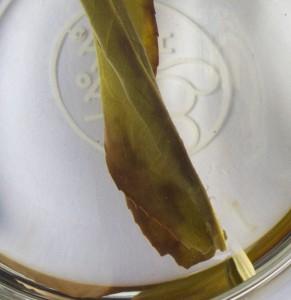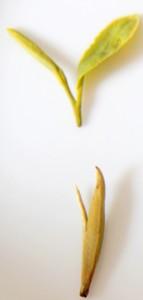It can be depressing at times to surf the web and read about tea related stuff. The powers that be at Google have a massive influence on our learning since research to most people means typing in a couple of words in Google and looking at the first 2 pages worth of listing. In-depth study probably means going another 3 pages.
Hence it would not be a stretch to say apart from a select few, most people’s understanding of tea is fraught with misinformation and misconceptions regarding tea.
In this article I will address specific statements within sites found among top keyword searches for Google. As many of the sites are vendor sites, I don’t wish to appear as though I’m sliming my competitors* hence I will paraphrase the statements.
*Although if they appear in the first page, they probably have quite a bit of resources at their disposal and rightly wouldn’t view my tiny enterprise as a threat.
1) Most statements pertaining to production of oolong tea
The basic steps of producing oolong are as follows:

Some are rolled and dried repeatedly, some areas undergo multiple firings to dry the leaves but the basic steps are as above.
Basically ‘yao qing’ is a rattling of the leaves to bruise it and speed up the oxidation and shaqing is a step whereby the enzymes in the leaves are destroyed by heat and oxidation is halted.
Hence Oolong tea will have a largely green appearance (unless it is high fired like Wuyi Oolong) with reddish sides to show the bruising and reddish veins where partial oxidation will take place.
Now compare this with ‘oolongs’ that are produced in a manner akin to black tea but shorter oxidation, a topic I covered here.
Why this is important is because many of the ‘oolongs’ in the market that don’t originate from tradition oolong production areas are simply weaker blacks, perpetuating the misconception that oolongs are only consumed for ‘health benefits’ and are less tasty black teas.
2) “White tea has little or no caffeine”
This is quite the opposite of the truth actually. White tea, especially silver needles are made from young leaves which are higher in caffeine. In addition, caffeine is destroyed by high heats- loss starts above 130°C and is melted above 200°C something that Prof Tu Yu Ying wrote about in his book “Cha Yu Jian Kang”
In the production of white tea, teas are withered in the sun and either sun-dried or lightly baked at 40-50°C, neither process would reduce caffeine unlike the production of green tea and oolong tea for example where shaqing can involve temperatures between 100-200°C.
3) “China only developed black tea recently to cater to western taste”

Black tea, especially Qimen has been consumed internally in China down the years although Chinese do not have the habit of adding milk and sugar to their teas. Nevertheless, black tea has always been less popular and lower grade tea leaves such as summer harvested teas are used to produce black tea primarily for export.
In recent years however, there has been an emergence in popularity of high end black teas in affluent Chinese nouveau riche circles. The emergence in high end Yunnan Blacks, Qimen Haoya (buds), Fujian gongfus (Bailin, Tanyang and Zhenghe) and Jiuqu Hongmei has been augmented by new varieties such as Jin Jun Mei, Hong Guanyin and amazingly Dancong Black tea as well, fetching prices that were previously unheard of for black teas.
4) ”Gong fu is a Chinese tea ceremony. A specialty of Fujian, it has become a trademark tea service in The People’s Republic of China (aka Taiwan and formerly known as Formosa)”
A lot of things wrong in this statement. First Gongfu Tea is not ceremonial. It is just a better way of brewing tea. Gongfu tea in essence is about taking the effort to brew tea, that is what gongfu means, time and effort.
Secondly, it originated from Chaozhou although Fujian, both northern and southern Fujian have their own styles.
Third and this is the best- the People’s Republic of China is mainland China. Taiwan is simply the Republic of China.
*Note, I didn’t make this up- I changed a couple of words and deleted others but the essence is unchanged, it is that bad*
5) “Green tea is the least processed of all tea”
No, white tea is.
Green tea undergoes ‘shaqing’, rolling and drying while white tea undergoes withering and drying only. ‘Shaqing’ and ‘rolling’ especially can be quite complex and labor intensive in high-end teas.
6) “White tea is completely un-oxidized.”

Green tea undergoes shaqing at the onset to destroy the oxidation causing enzymes where white tea doesn’t undergo shaqing at all.
You can see from the colors of the leaves that the one above is Xinyang Maojian, a green tea. It preserves its green leaves while the Silver Needles below is darker in color.
To be continued….
